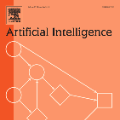The street has emerged as a primary site where everyday publics are confronted with AI as an infrastructural phenomenon, as machine learning-based systems are now commonly deployed in this setting in the form of automated cars, facial recognition, smart billboards and the like. While these deployments of AI in the street have attracted significant media attention and public controversy in recent years, the presence of AI in the street often remains inscrutable, and many everyday publics are unaware of it. In this paper, we explore the challenges and possibilities of everyday public engagement with AI in the situated environment of city streets under these paradoxical conditions. Combining perspectives and approaches from social and cultural studies of AI, Design Research and Science and Technology Studies (STS), we explore the affordances of the street as a site for 'material participation' in AI through design-based interventions: the creation of 'everyday AI observatories.' We narrate and reflect on our participatory observations of AI in five city streets in the UK and Australia and highlight a set of tensions that emerged from them: 1) the framing of the street as a transactional environment, 2) the designed invisibility of AI and its publics in the street 3) the stratification of street environments through statistical governance. Based on this discussion and drawing on Jane Jacobs' notion of "eyes on the street," we put forward the relational notion of "reciprocity deficits" between AI infrastructures and everyday publics in the street. The conclusion reflects on the consequences of this form of social invisibility of AI for situated engagement with AI by everyday publics in the street and for public trust in urban governance.
翻译:暂无翻译





